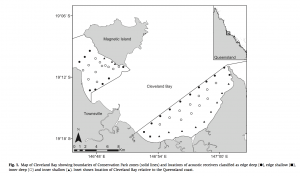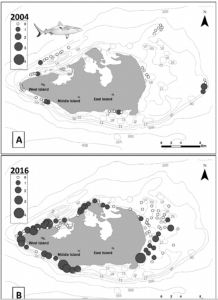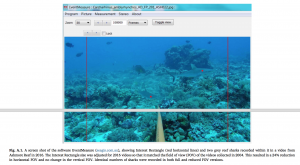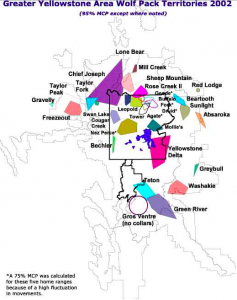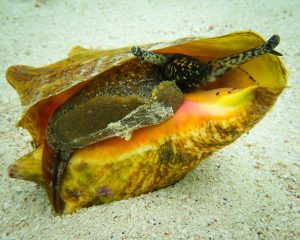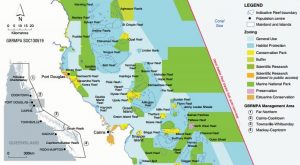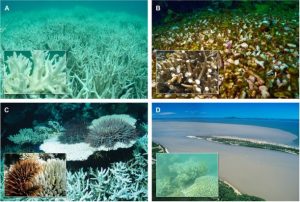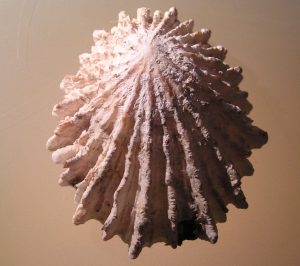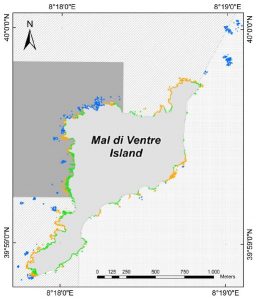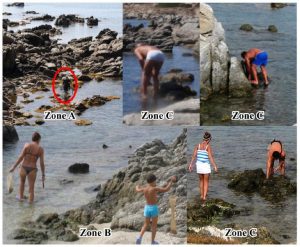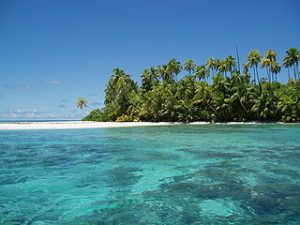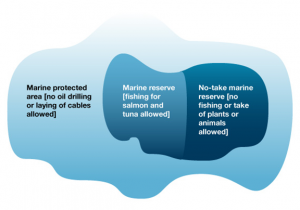Effectiveness of MPA’s
By: Peter Aronson, SRC Intern
One might think that setting aside marine protected areas (MPA’s) – areas of the ocean where human activity is more heavily restricted – would reduce fishing pressure and overexploitation of marine species. However, that is not always the case. A group of researchers sought to determine if MPA’s experience intense human pressure, and if that pressure was undermining the goal of conserving biodiversity. They focused on European waters, where a substantial amount of industrial fishing occurs (Kroodsma et al., 2018), and an ample network of MPA’s covers about 29% of the sea (European Union, 2016).
Trawling is the most common method of industrial fishing in Europe (Kroodsma et al., 2018). It often has high bycatch rates and is a threat to many endangered species, including many elasmobranchs, as well as entire seafloor habitats. Researchers used satellite data to track fishing vessels and quantify commercial trawling effort. All 727 MPA’s in the study were considered 100% marine, designated prior to 2017, and listed on the World Database on Protected Areas.

Figure 1. Miramare Marine Reserve, Italy. (Sebastian Lake, September 29, 2015. Wiki Commons)
In 2017, combined trawling effort exceeded 1 million hours with over 225,000 occurring inside MPA’s. Trawling intensity, measured in hours per square kilometer, was 38% greater inside MPA’s compared to unprotected areas, and 46% more intense inside MPA’s when only looking at the areas that were trawled. This suggests that under current management, there is no reduction of fishing pressure inside MPA’s. Higher trawling rates typically occurred in larger MPA’s. Of all 727 MPA’s, trawling occurred in 489, of which 58% were located within territorial waters. Interestingly, only 40% of untrawled MPA’s had management plans whilst 60% of commercially trawled MPA’s did.
The relative abundance of 20 elasmobranch species was estimated from data collected on scientific trawl surveys between 1997 and 2016. Elasmobranchs were generally rare, with the main concentrations located west and south of the British Isles. Elasmobranchs were caught in 79% of the 178 MPA’s that were surveyed (only 13% of these had no commercial trawling). Total elasmobranch catch per research haul was 2.3 times higher outside MPA’s than inside, and a normalizing for species showed 24% more elasmobranchs outside the MPA’s.

Figure 2. Salmon shark caught in a trawl net. (Kathy Hough, http://www.moc.noaa.gov/od/visitor/Photo%20Gallery/Life%20at%20Sea/photos-d/photos-d.html Wiki Commons.)
Multiple factors are thought to drive conservation outcomes inside MPA’s, however, under present fishing pressure, only MPA size correlated positively with relative elasmobranch abundance. Untrawled MPA’s had a larger average elasmobranch abundance than trawled MPA’s. Overall, elasmobranch abundance negatively correlated with commercial trawling intensity both inside and outside MPA’s. It was found that commercial trawling was the strongest predictor of relative elasmobranch abundance across the study sites with an average decrease of 69% across the observed gradient of trawling intensity. This provides further evidence that increased trawling effort in MPA’s negatively impacts sensitive species and reduces ecological value.
This study shows designating MPA’s does little value for at-risk species. The issue of declining biodiversity due to high trawling intensity in European MPA’s has been highlighted here. The lack of international MPA standards may play a role in the lack of effectiveness, and better standardization of MPA’s should occur to avoid this. Allowing industrial fishing in MPA’s provides a false sense of security about marine conservation in Europe, and much work needs to be done to make MPA regulations stronger and management more transparent.
Work Cited:
A. Kroodsma et al., Science 359, 904-908 (2018). European Union, The EU in the World 2016 Edition (European Union, 2016).

